Filter by
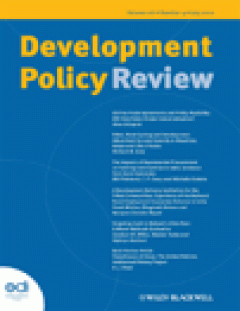
State Fragility and Governance : Conflict Mitigation and Subnational Perspect…
An earlier version of this article was presented at the international workshop on ‘Global Effects and Local Dynamics of Intrastate Conflicts’, organised by the Leonard Davis Institute for International Relations, Hebrew University of Jerusalem and the Center for Advanced Study of International Development, Michigan State University, held in Jerusalem in May 2009. The author thanks the participa…
- Edition
- Volume 29, Issue 2, March 2011, pages 131–153
- ISBN/ISSN
- 09506764
- Collation
- -
- Series Title
- Development Policy Review
- Call Number
- -

Impacts of the Triple Global Crisis on Growth and Poverty : The Case of Yemen
This article is an output of the project ‘Poverty and food security strategy for Yemen’ funded by the Ministry of Planning and International Cooperation (MOPIC) of Yemen with support from the European Commission (EC) and the World Bank. The authors gratefully acknowledge comments from Khaled Saeed, Merna Hassan, Samed Albori and Abdulmajeed Al-Bataly (MOPIC), Damien Buchon, T. G. Srinivasan, Na…
- Edition
- Volume 29, Issue 2, March 2011. pages 155–184
- ISBN/ISSN
- 09506764
- Collation
- -
- Series Title
- Development Policy Review
- Call Number
- -

Grants to Needy Countries? A Study of Aid Composition between 1975 and 2005
This article discusses whether the poorest and most indebted countries receive aid in the form of grants rather than loans, by studying bilateral aid flows to low- and middle-income countries between 1975 and 2005. The empirical analysis finds no evidence that more indebted countries receive a higher grant component, but it does show that poorer countries receive a significantly higher grant co…
- Edition
- Volume 29, Issue 2, March 2011, pages 185–209
- ISBN/ISSN
- 09506764
- Collation
- -
- Series Title
- Development Policy Review
- Call Number
- -

The Food Crisis and its Impacts on Poverty in Senegal and Mali: Crossed Desti…
This article uses two CGE macro-micro models to analyse the distributional impact of the food crisis and policy responses in two neighbouring African countries, both of which are strongly dependent on agriculture. The approach captures structural differences at both the macro and micro level for household income and expenditure structures, and the results reveal differences for poverty impact a…
- Edition
- Volume 29, Issue 2, March 2011, pages 211–247
- ISBN/ISSN
- 09506764
- Collation
- -
- Series Title
- Development Policy Review
- Call Number
- -
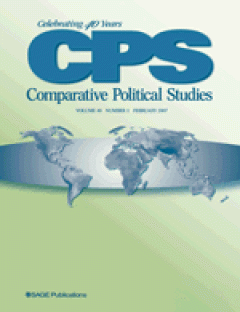
Navigating Institutional Change: The Accord, Rogernomics, and the Politics of…
This article uses a transactions approach to examine the ability of governments to develop and sustain negotiated solutions to major economic challenges. Where actors are embedded in long-term, repeated interaction, have long time horizons, and invest in monitoring and enforcement technologies, effective political exchange is more likely. In good transactions environments, policy bargains will …
- Edition
- Vol. 44 no. 2, February 2011.pp. 127-155
- ISBN/ISSN
- 00104140
- Collation
- -
- Series Title
- Comparative Political Studies
- Call Number
- -

Unlootable Resources and State Security Institutions in Tajikistan and Uzbeki…
Why, when faced with similar conditions of weakening central control, do some institutions of state security fragment into autonomous agents of organized violence whereas others cohere around coercive rent seeking without challenging the central government? Focusing on Tajikistan and Uzbekistan, this article explains these divergent state security outcomes as a consequence of resource concentra…
- Edition
- Vol. 44 no. 2, February 2011.pp. 156-183
- ISBN/ISSN
- 00104140
- Collation
- -
- Series Title
- Comparative Political Studies
- Call Number
- -

Revisiting the Party Paradox of Finance Capitalism: Social Democratic Prefere…
The “party paradox” thesis claims that in the context of the legal corporate governance reforms of the 1990s, which aimed at adjusting national corporate governance systems to the “finance capitalism” of the Anglo-American type, center-left parties promoted proshareholder corporate governance reforms, whereas center-right parties opposed such reforms. Based on case studies of Switzerland, Swede…
- Edition
- Vol. 44 no. 2, February 2011.pp. 184-210
- ISBN/ISSN
- 00104140
- Collation
- -
- Series Title
- Comparative Political Studies
- Call Number
- -

Political Institutions and Property Rights: Veto Players and Foreign Exchange…
What political institutions improve property rights? Building on the work of North and Weingast, this article argues that institutional checks on policy-making discretion (“veto players”) improve the property rights of investors regarding the value of the domestic currency. Veto players constrain the ability of policy makers to opportunistically pursue policy that may lead to a depreciated dome…
- Edition
- Vol. 44 no. 2, February 2011.pp. 211-240
- ISBN/ISSN
- 00104140
- Collation
- -
- Series Title
- Comparative Political Studies
- Call Number
- -
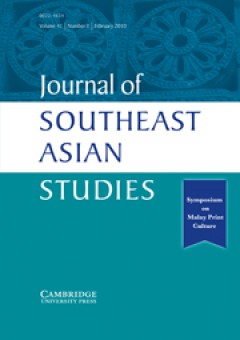
Slavery and cultural creativity in the Banda Islands
In his influential edited volume Slavery, bondage and dependency in Southeast Asia, Anthony Reid suggests that long-term slave-based systems of production were absent from agriculture in Southeast Asia, and had an ambiguous presence at best in other areas of economic activity. The argument he presents suggests that indigenous slavery in the region merged into a ‘kind of serfdom or household mem…
- Edition
- Volume 41, Number, 3, October 2010. pp. 365-389
- ISBN/ISSN
- 00224634
- Collation
- -
- Series Title
- Journal of Southeast Asian Studies
- Call Number
- -

The ‘informal Portuguese empire’ and the Topasses in the Solor archipelag…
This study of Timor and the surrounding islands between the sixteenth and eighteenth centuries provides evidence that, after the demise of the Portuguese Estado da India, an ‘informal’ or ‘shadow’ empire persisted but in uniquely localised ways. It describes the emergence of the ‘black Portuguese’ community known in Timor and the Solor archipelago as the Topasses. Their singular identity was ba…
- Edition
- Volume 41, Number 3, October 2010.pp.391-420
- ISBN/ISSN
- 00224634
- Collation
- -
- Series Title
- Journal of Southeast Asian Studies
- Call Number
- -

The worst of both worlds: Commercial rice production in West Indramayu, 1885â…
This paper deals with the consequences of the increasing commercialisation of the rice industry in west Indramayu from the mid-1880s to the late 1930s. Instead of prosperity as a result of growing rice for sale in a free market, local peasants found their survival being threatened by traders who had them bound to a vicious cycle of debts and who acquired much of the rice they produced. The rice…
- Edition
- Volume 41, Number 3, October 2010.pp.421-448
- ISBN/ISSN
- 00224634
- Collation
- -
- Series Title
- Journal of Southeast Asian Studies
- Call Number
- -

Living with difference in rural Indonesia: What can be learned for national a…
Much research has sought to understand why mixed communities in Indonesia have been torn apart by violent conflict. By contrast, little is known about how people live together successfully in the mixed, low-conflict communities that exist in abundance throughout the Indonesian archipelago. This paper explores the inter-communal relations in the multiethnic, Christian-Muslim coastal village of O…
- Edition
- Volume 41, Number 3, October 2010.pp.449-481
- ISBN/ISSN
- 00224634
- Collation
- -
- Series Title
- Journal of Southeast Asian Studies
- Call Number
- -

Unofficial contentions: The postcoloniality of Straits Chinese political disc…
This paper reads the debates of the Straits Settlements Legislative Council to trace the political contentions over policies affecting the Chinese community in Malaya. These contentions brought the Straits Chinese unofficials to engage the racial ambivalence of British rule in Malaya, in which the Straits Chinese was located as both a liberal subject and an object of colonial difference. Contra…
- Edition
- Volume 41, Number 3, October 2010.pp.483-507
- ISBN/ISSN
- 00224634
- Collation
- -
- Series Title
- Journal of Southeast Asian Studies
- Call Number
- -

Testimony, trauma and performance: Some examples from Southeast Asian theatre
This paper is a reflection on a number of theatre performances held in Singapore, each of which probed problematic or traumatic historical events occurring either in Singapore itself or in other parts of Southeast Asia. These avant-garde performances were inspired by or built around actual testimonies of individuals in ways which, for this author, suggest a striking fluidity in the boundaries b…
- Edition
- Volume 41, Number 3, October 2010.pp.509-528
- ISBN/ISSN
- 00224634
- Collation
- -
- Series Title
- Journal of Southeast Asian Studies
- Call Number
- -

Localisation, regionalism and the history of ideas in Southeast Asia
Much analysis of Asian regional relations and institutions is written in an historical and cultural vacuum. The impression is often given that security or economic arrangements are comparable with physical structures — creations of engineers rather than social scientists (or even architects). The writings of Amitav Acharya, now Professor of International Affairs at American University in Washin…
- Edition
- Volume 41, Number 3, October 2010.pp.541-549
- ISBN/ISSN
- 00224634
- Collation
- -
- Series Title
- Journal of Southeast Asian Studies
- Call Number
- -
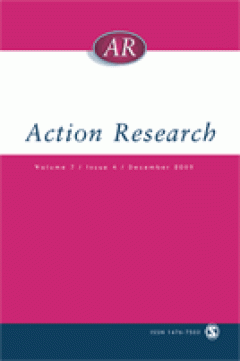
Conflicting demands and the power of defensive routines in participatory acti…
Participation has been of ongoing interest in the field of action research and the New Health Promotion movement, but it is not without tensions and problems. This article presents the challenge of containing the conflicting demands of personal empowerment, practical advancement and theory building in a community-based participatory action research project ‘Aspiring to Healthy Living in The Net…
- Edition
- Vol. 8 no. 4, December 2010.pp. 367-386
- ISBN/ISSN
- 14767503
- Collation
- -
- Series Title
- Action Research
- Call Number
- -

Using action research to develop a research aware community pharmacy team
An action research approach was applied to develop a community pharmacy team into a research aware practice. A pharmacy team consisting of a pharmacist and medicine counter assistants carried out this project. They started by reflecting on their own practice and in doing so examined the reliability of the evidence base they used to give advice to customers regarding the sale of medicines. The t…
- Edition
- Vol. 8 no. 4, December 2010.pp.387-406
- ISBN/ISSN
- 14767503
- Collation
- -
- Series Title
- Action Research
- Call Number
- -

Between idealism and reality: Meeting the sagepub. challenges of participator…
Participatory action research (PAR) is a methodological stance that researchers can find both inspiring and daunting. Community-based PAR offers a platform by which social scientists can contribute to the democratization of knowledge and its production, but also requires that they go beyond conventional roles and procedures to interact with community co-researchers in ways that may leave univer…
- Edition
- Vol. 8 no. 4, December 2010 .pp. 407-425
- ISBN/ISSN
- 14767503
- Collation
- -
- Series Title
- Action Research
- Call Number
- -

Participatory photography: A tool for empowerment or surveillance?
Based on a case study of a participatory photography project with a Salvadoran adult literacy program, this article explores some of the challenges and risks that arise when people use cameras to document their lives. The article examines the unanticipated problems the author and participants encountered (i.e. suspicion, timidity, and ridicule), and elucidates how historical and sociocultural f…
- Edition
- Vol. 8, no. 4, December 2010.pp. 426-443
- ISBN/ISSN
- 14767503
- Collation
- -
- Series Title
- Action Research
- Call Number
- -
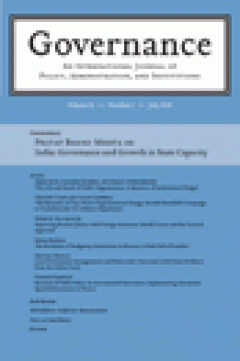
More Knowledge, Better Government? Consequences of Knowledge-Based Decision M…
Using an example from the health-care sector, we illustrate consequences of implementing knowledge-based decision making relating to the exercise of political control. The Swedish Pharmaceutical Benefits Board decides the subsidization status of prescription pharmaceuticals. Building on a study of the agency's work, we explore the effects of institutional arrangements stemming from rationalisti…
- Edition
- Volume 24, Issue 1, January 2011. pages 85–110
- ISBN/ISSN
- 09521895
- Collation
- -
- Series Title
- Governance
- Call Number
- -
 Computer Science, Information & General Works
Computer Science, Information & General Works  Philosophy & Psychology
Philosophy & Psychology  Religion
Religion  Social Sciences
Social Sciences  Language
Language  Pure Science
Pure Science  Applied Sciences
Applied Sciences  Art & Recreation
Art & Recreation  Literature
Literature  History & Geography
History & Geography